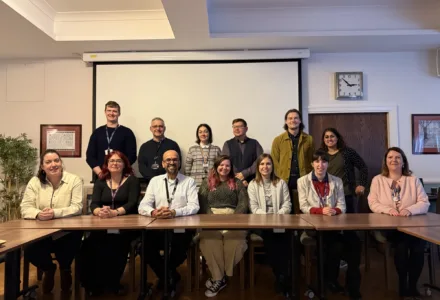How easy is it to use open data?
The LORIC team have reviewed a few of our most used open data sources to give you the lowdown on how easy and useful it can be to use open data sets.
Office for National Statistics
ONS, are the largest independent producer of official statistics and the recognised national statistical institute of the UK. They break down their data across four key themes: Business, Industry and Trade; Economy; Employment and Labour Market; and People, Population and Community. With such a wide range of subjects covered, their site is likely to hold the answers to a great many open data related queries. There are a variety of ready-made reports relating to a wide range of subjects, and for further details, the raw data from each data set used can be downloaded in order to interrogate the figures further.
One limitation of the ONS is that it is so big. Such a vast amount of information can be daunting to navigate, and the raw data tables that you can download can be very large. If you know exactly what you’re looking for, the level of detail is great for granular analysis.
NOMIS
Provided by the Office for National Statistics, NOMIS is the home of official labour market statistics for the UK. Its data is taken from a wide range of population and labour market sources such as the Census, Annual Population Survey, Annual Labour Force Survey, Annual Survey of Hours and Earnings, and the Department for Work and Pensions.
Pre-prepared reports for the labour market information per area are available, with reports available by local authority area, LEP area, as well as regional and national profiles.
Standard reports that they produce cover the subjects of employment and occupation, by gender, and by full time/part time status.
For bespoke reports, use the Data Downloads tab to choose the data set you are interested in, then refine for the specific information you are looking for by selecting the geography you are interested in, the time frames of the data, and other relevant variables, such as age or gender.
Once you have selected the items you are looking for, click on Download Data and the report will be produced for you in around 3 seconds.
Lincolnshire Research Observatory
Provided by Lincolnshire County Council, the Lincolnshire Research Observatory hosts important sources of information on local Lincolnshire intelligence including the JSNA, Council Business Plan, Economic Briefing, Area Profiles, 2011 Census, and information on Commissioning.
The information provided is grouped into a number of themes, including: Population; Economy; Health; Deprivation and Poverty; Crime and Community Safety; Housing; Education and Skills; Access to Services; and Environment.
Under each theme heading, a variety of data can be found. By clicking on the “+” symbol next to the subheadings, it is possible to view all of the relevant data sets that are available. Clicking on the map icon will allow you to see a map showing the data for all 7 districts in Lincolnshire.
To download the data in CSV format, click the download options at the bottom of the page.
One limitation of the data held within the Lincolnshire Research Observatory is that it has already been filtered to focus on Lincolnshire data, so in order to look at areas further afield, it is necessary to go back to the original source data listed by the website.
Companies House
Hosted by the UK Government, Companies House provides a useful tool for gathering information on a particular company, including their registered address, company registration number, SIC code, filing history, officers, and people with significant control.
Recent changes to the website mean that it is no longer possible to download information about groups of companies, so a limitation is that each company must be searched for separately, and the company name and/or registration number is needed in order to do this.
My NHS
My NHS is a Beta service provided by the NHS. At the time of writing, there are 58 open data sets listed, which include: Safe Staffing; Reliable recovery Rate; Delayed Transfer of Care; and Financial performance. By choosing a data set and “Locking” the data variables that are required, it is possible to display a list of values on screen. Filters can then be applied to focus the data view. Data Columns can be added to you “data cart” or downloaded as a CSV or Excel file.
Limitations of this platform are that it is not as intuitive to use as other data sets, and it is important to read the instructions fully before trying to extract or interpret any data. The meaning of the data sets can be found in the “about” tab on the data set page. As it is a beta service, improvements are being made to enhance the usability, so the system may not currently have all of the functionality that is required.
Summary:
Whilst the amount of open data available is huge and growing all the time, it is important to consider a few factors before it is used.
- Is it definitely “open data”? By this we mean does it have a data license that allows it to be freely used, shared, reproduced and combined with other data?
- Is there a data set that can directly answer your questions, or if not, are there another data sets that could be used to extrapolate or infer the required information from?
- Where does the data come from? Is if from a reliable and authoritative source? In the case of the websites above, the answer would be “yes”, but as with any form of research, it is always worth considering the provenance of the facts presented.
- What does the data actually show? Distinctions in the way that data is gathered or represented can be important, especially when looking to compare data sets with one another. It is important to remember to compare apples to apples, not apples to oranges.
- Once you have your data, are you confident to analyse it in order to gain from it the meaning that you require?
- Would combining the data with other sources of open data, or your own proprietary data be useful in order to explore further meaning behind the numbers?
If you are keen to get started with open data, or to expand on your current knowledge, and need some support, the LORIC team are always happy to help. You can drop us an email here.
Photo by Franki Chamaki on Unsplash
Related Posts

Visits to BGU from Innovate UK

LORIC Wraps Up Successful SED Project

Innovate UK’s East Midlands Knowledge Exchange Forum hosted on BGU campus!

Understanding the Economic Impact and Future Potential of Greater Lincolnshire’s Sport, Physical Activity & Leisure Sector

LORIC Wins Venue of the Year Award

Digitising the Archive of the 20th Century Philosopher John Macmurray
